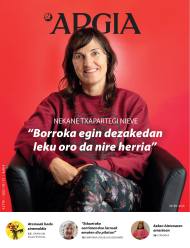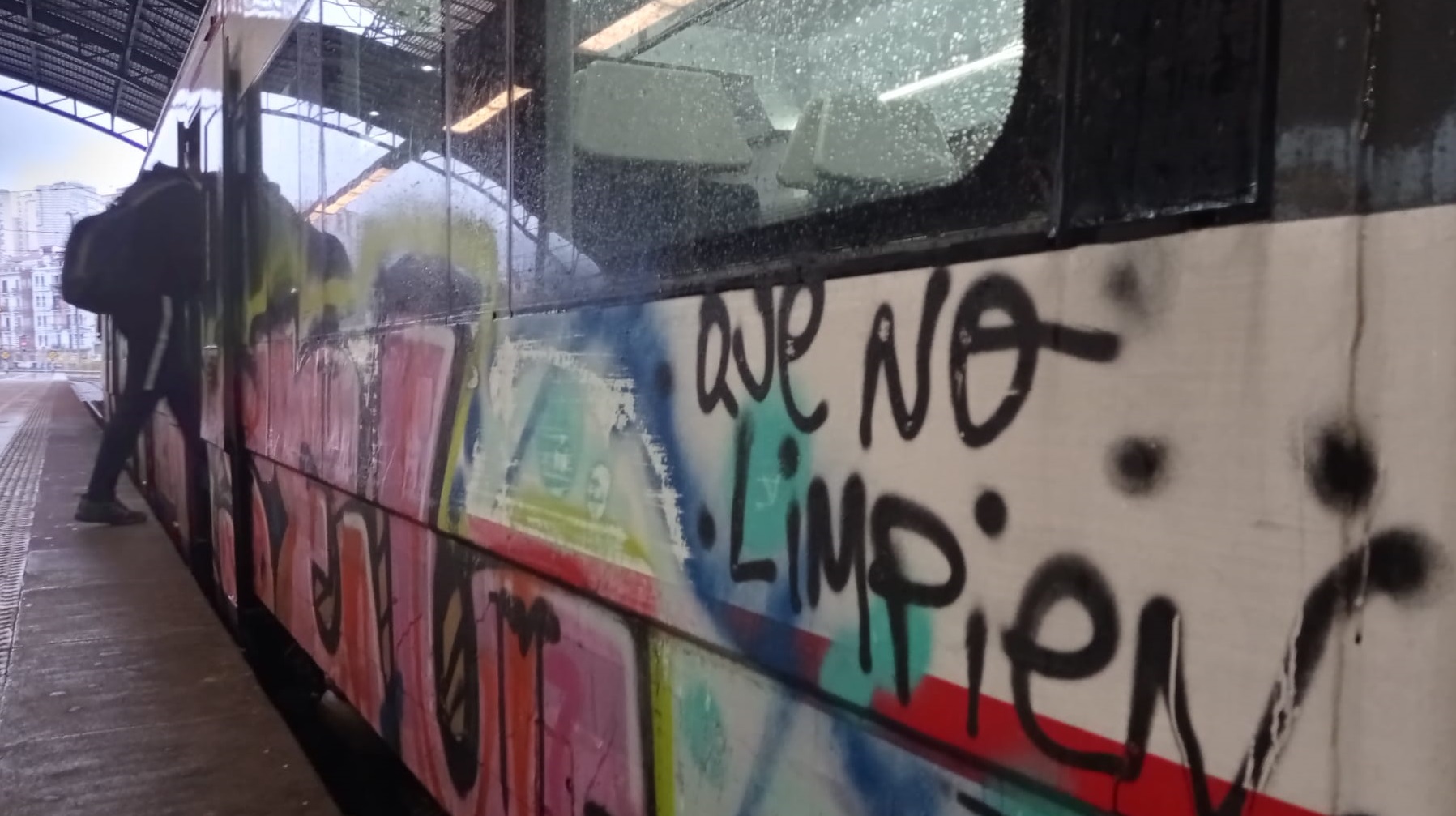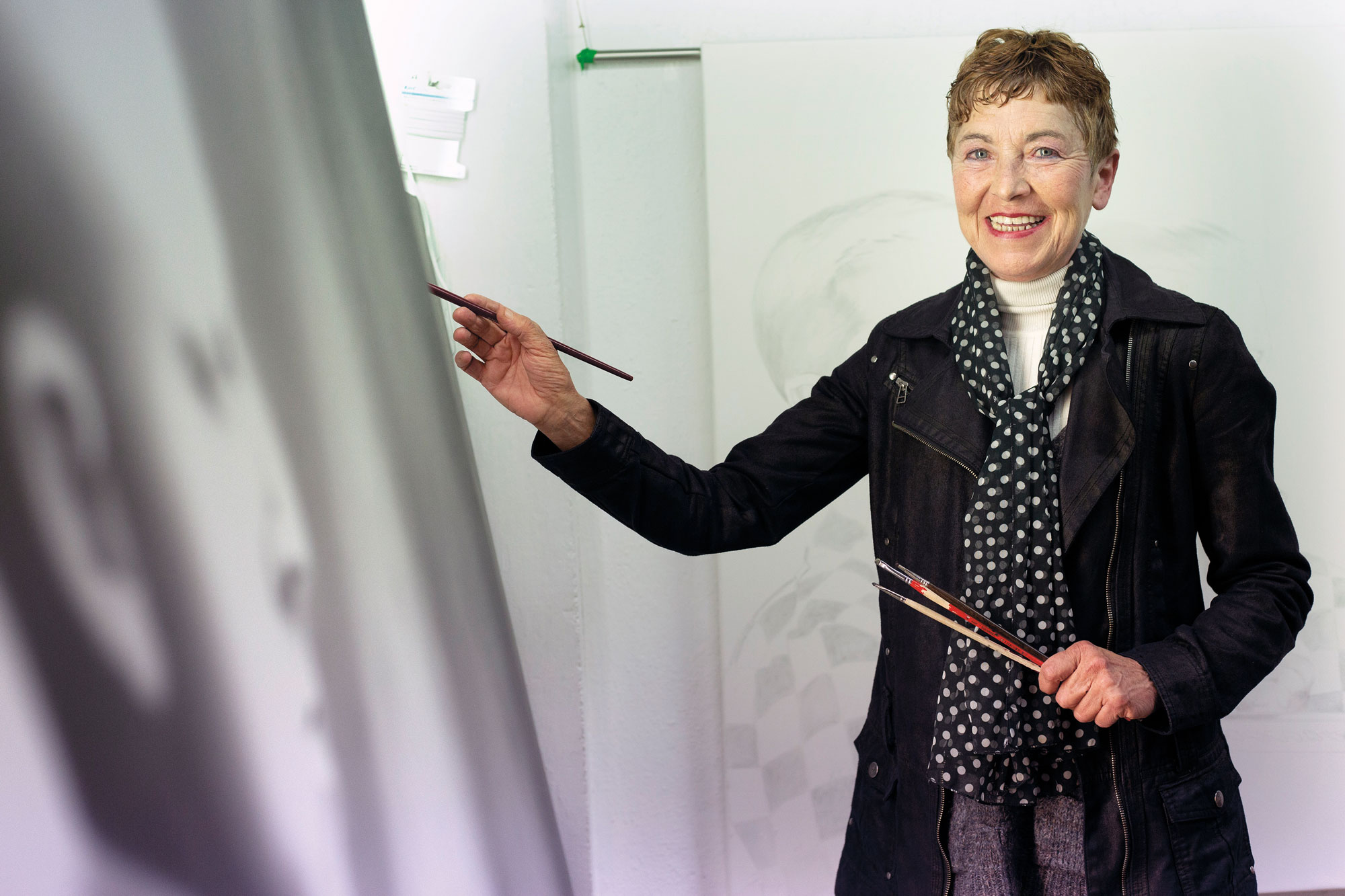Wild, absurd, shooting, revolution
- Last week we talked about Punka's background in painting. This week we will focus on some of the artistic explosions that appeared in Europe after the First World War, such as Dadaism, surrealism, the letrist movement, the beat generation and Andy Warhol, which in addition to shooting Valerie Solanas wrote the SCUM manifesto. Ready?

Coinciding with the expansion of chaos and hedonism in the old Europe, in the 1920s there was another avant-garde movement: Dadaism, although the beginnings of the movement were in the previous decade. They were hectic times: young Europeans knew hell in the trenches between France and Germany and many did not return; the flu pandemic spread death to cities; and in Russia there were ten days that needed to shake the world. Death was very present in everyday life, and proof of this is the great success of the attempts of spiritism to contact the dead at this time. In this context Dadaism is born as a reaction to this dark situation.
To the absurdity of life
Dadaism was born in the Cabaret Voltaire room in Zurich, Switzerland, where Germans Hugo Ball and Emmy Hennings made readings of their public performances and texts. This movement had a lot to do with Surrealism, an artistic expression that, like him, emerged from the unconscious. “Given” means nothing, because in the face of the war disaster there is no need to say anything else. The word “Dada”, which designated the movement, was born randomly, without any intention, without any profound meaning, with the sole intention of expressing nothingness.
Dadaists, unlike the futurists, were anti-belligerents. The Cabaret Voltaire brought together people who were traumatized by war, many of whom were exiled and fled from war. They couldn't go back, because the world they met no longer existed. Faced with the outbreak of the Great War in the society of the old Europe, art, at least Dadaism, decided to worship the absurd.
The first job that emerged within Dadaism is the poem Karawane, composed exclusively of phonemes. It has no known words. He read this poem with a greedy and savage voice in the scant recordings in which the dadaists Hugo Ball are kept. Sometimes, Lekeitio de Mikel Laboa remembers the song of the series, or a song recorded by the Azkoitia Akauzazte in Matadeix of his locality.
For the Situationists it was not enough to criticise, political action was needed:
create situations
The work developed by Hannah Höch among the Dadaists was very important for the punk movement. This woman of German origin is one of the pioneers of photomontage and with her collage was very acclaimed by the barbarism of the heteropatriarchal society, especially warmonism. The collages were widespread in the punk movement and, among many others, were one of the symbols of the Crass group. More than a musical group, the latter was an artistic and political group that, with the help of music support, spread its message. They were iconoclastic, fighting the customs and social conventions of the time. They were pacifists, like the Dadaists, reacted to the fear of nuclear war that lived with pacifism and nature advocates. They also faced clichés within the punk movement, like drug use. They were an organized movement, agitation and propaganda activists. The artistic aspect of the albums was as important in the image as the music. The skin and insert inside were often collages that remember dadaism. The head of the imaginary of the group was Gee Vaucher, one of the members of this anarch-punk collective. The artworks created by him became signs of identity of the group and his work significantly influenced the collectives and artists that emerged around the spirit do it yourself.
As mentioned at the beginning, the relationship of surrealism with Dadaism is very evident, since both used the absurdity of life to make art and create confusion in the bourgeoisie. The connection between the two movements is made by the French artist Marcel Duchamp. Like many Dadaists, he refused to participate in the Great War and left Europe. But Duchamp's art did not mark the political character of Dadaism. He says that the Dadaists faced the public and the world, were involved in a fight and within a struggle there is no chance of laughing. He wanted to laugh at the absurdity of the world, to turn desire and surprise into the basis of a new life. Not only was art a joke and so you had to look at the world. His greatest contribution was to transform any everyday object into an artistic piece. For him, a wheel, a toilet, could be art. He called this kind of art readymade. Although at the time this concept was a breaker, as it opposed the elitist character of bourgeois art, today it has become a topic. In line with this idea, in 1961 the Italian Piero Manzoni presented the work The excrement of an artist and sold 90 copies. The artwork is a can that supposedly contains the artist's defecation. Of course it's a deception, it's a shit, literally, but as it's presented as an artwork, Manzoni wanted to show that people were willing to admire it and buy it. Johnny Rotten, singer of the Sex Pistols group, wanted to convey the same idea when he screamed from the microphone at the group's last concert: “Have you ever felt scammed?”
As fraud has been mentioned, it is essential to speak of the figure of Elsa Von Freyteg. Although little work has been done by this woman, it must be claimed as one of the precursors of both Dadaism and the readymade technique. He took his first steps in poetry by writing phonetically rupturistic texts. Most of these works remained lost until their recovery and publication in 2011. He performed performances, in striking and curious costumes, similar to those currently used by the Drag culture. Many of the works performed by Elsa Baronesa, which he called himself so, have been carried out by other artists, mostly men, including the famous work Fuente de Duchamp (1917).

Postwar Savage Youth
One of the first post-war artistic and avant-garde movements was the Letrist movement, which began as a rupture with Surrealism. His first action was a declaration of intent: Isidore Isou, one of the founders of the movement, enters a conference on Da, cuts the speaker and starts reading poetry written by himself. However, the relationship with the previous movements was evident. They saw letrism as a continuation because Isou recognized “the same role as Jesus Christ in Judaism.” After the expansion of Dadaism, Isou wanted to crush this movement to start a new phase of expansion. In this way, Dadaism intended to give continuity to the process initiated with the intention of annulling the words by mixing poetry with music. Together with poetry, they produced numerous film productions and published political manifestos demanding an end to paid work. They performed many performances, the most scandalous was entering dressed as a monk in the cathedral of Notre Dame (Paris) and reading in the pulpit the sermon that said “God has died”.
Letrism, followed by the creation of the Letrist International, was an isolated movement of little influence beyond the participants. But in the post-war period the West had to experience the tremor of the appearance and explosion of a new figure; the adolescents, and their associated counter-cultural movements, emerged from the catacombs and were massified.
In the 1950s, white youth didn't stop. Without believing in the American Way of Life, young people started to live out of that ideal. The rebellion of these young people, rather than of a political nature, was nihilistic. The presence of the hero of those times, James Dean, is a clear sign of the spirit. Music also had a great influence, as in that decade began to triumph among white youth rock & roll originally invented by blacks. But we found more politicized, or at least more intellectual, rebel models in the second half of the 1950s, specifically as a result of the creation of the beat literary movement. The first statement is Howl (Ulua) of the poet Allen Ginsberg, published in 1955. This work will make a cruel and savage representation of the United States, contrary to the image prevailing at the time.
William S. Burroughs was the one that left the most mark on the punk culture of beat writers. In fact, the location of Burroughs beat within the movement responds more to chronological reasons than to its form and content. He was a contemporary of Ginsberg and Jack Kerouac and had friendly relations with them, but Burroughs moved in other coordinates. He understood language as a virus and had to write to fight that disease. He was obsessed with control and articulated his political message around it: the fight against control. It is related to Dadaism, since the cut-up technique he put into practice resembled the Dadaist collages: he wrote a text, cut it in different parts, mixed it and formed a new text. Although he lived from writing, he never succeeded much until he was proclaimed by the punk movement. In his old age he collaborated with artists such as Sonic Youth, Patti Smith or Kurt Cobain.
A character who is very far from Burroughsen, because of his commercial character, was Andy Warhol. He applied the Readymade technique to artists rather than to objects. For him everything could be art or artist. He collaborated with any artist as long as this brought him an economic benefit. He called his local The Factory, the factory, another example of a commercial approach. Warhol became a trademark. Many of the artistic works of factorial origin were published under the label “Andy Warhol presents”. He lived in success and prosperity, but there were also those who faced his attitude.

On June 3, 1968, a 32-year-old girl named Valerie Solanas was waiting at the door of The Factory. He had been living in New York City for years. Although he first exercised prostitution, from 1965 he was in contact with Warhol and participated in his two films, in exchange for a script that Warhol had lost before. During that time he wrote the SCUM Manifesto, abbreviated by the phrase Society for Cutting Up Men, a Misandean manifesto that opposed not only the heteropatriarchy, but opposed the men. That morning he did not appear alone in The Factory, he was accompanied by a pistol he bought earlier this year. Although film director Paul Morrissey ordered him to leave, Valerie managed to enter the building. He came to Warhol's office with the help of Morrissey. When the filmmaker comes to the bathroom and Warhol attends a phone call, Solanas triggers Warhol.
Art and revolution: monitoring a fire
Since the 1960s, since Letrism a movement was born that would affect art and politics, also the events of May 1968: situationism. The first steps of this movement were taken in 1957 when Guy Debord published the text for the creation of the Situationist International. Debord wanted to join the descendants of Letrism in another movement, merging art and political revolution. He sees a thread linking Dadaism, Surrealism, Futurism and Letrism. For Debord, the four currents managed to put an end to the bourgeois conception of art, giving it a new character. But we had to go further. Criticism was not enough, proposals and political actions were needed. He proposed the creation of situations or situations: the emergence of temporary situations of alternative ways of life. Capitalist society was immersed in the stage of the spectacle and settlements should be built on its remains in all aspects of life – urbanism, poetry, cinema, etc. – which should clarify a new future. On these bases the Situationist International emerged in the late 1950s. Despite the hermetism of the organization, the texts written by Guy Debord, Raoul Vaneigem... had a great influence among the revolutionary movements that emerged in the 1960s. In the May Paris riots in 1968, the Acionist International played an important role and its fame skyrocketed. For this reason, the creators decided to dismantle the organization, but the fire they left was picked up and transported by others during the 1970s: especially in Italy, but also in Euskal Herria the autonomous movement spread; and in London the punk movement emerged.
Eskultura grekoerromatarrek bere garaian zuten itxurak ez du zerikusirik gaurkoarekin. Erabilitako materiala ez zuten bistan uzten. Orain badakigu kolore biziz margotzen zituztela eta jantziak eta apaingarriak ere eransten zizkietela. Bada, Cecilie Brøns Harvard... [+]
Behin batean, gazterik, gidoi nagusia betetzea egokitu zitzaion. Elbira Zipitriaren ikasle izanak, ikastolen mugimendu berriarekin bat egin zuen. Irakasle izan zen artisau baino lehen. Gero, eskulturgile. Egun, musika jotzen du, bere gogoz eta bere buruarentzat. Eta beti, eta 35... [+]
This text comes two years later, but the calamities of drunks are like this. A surprising surprise happened in San Fermín Txikito: I met Maite Ciganda Azcarate, an art restorer and friend of a friend. That night he told me that he had been arranging two figures that could be... [+]
On Monday afternoon, I had already planned two documentaries carried out in the Basque Country. I am not particularly fond of documentaries, but Zinemaldia is often a good opportunity to set aside habits and traditions. I decided on the Pello Gutierrez Peñalba Replica a week... [+]
























